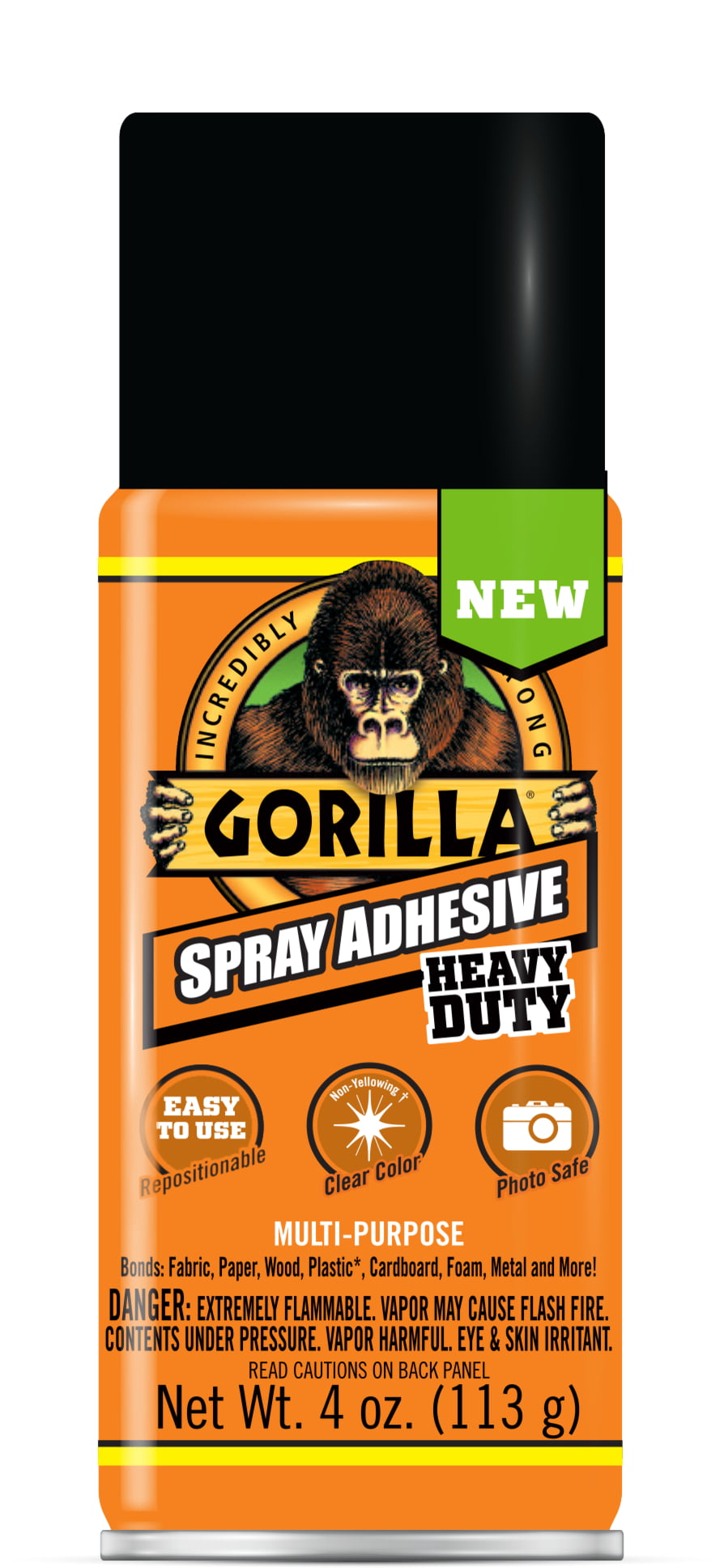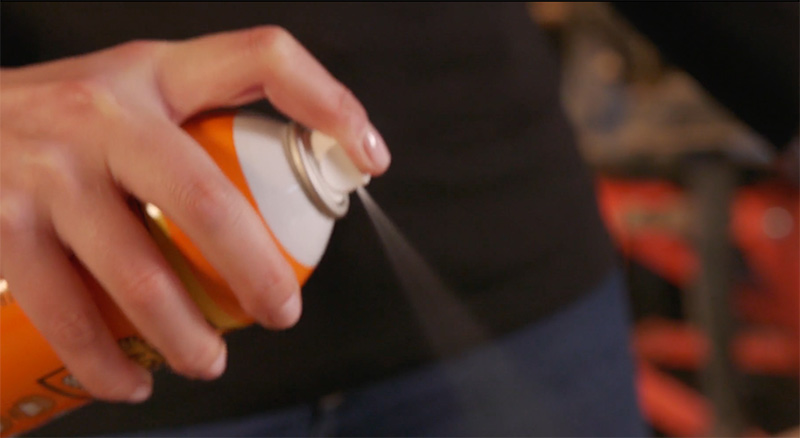

The original Gorilla Glue hazard sheet states it may cause ‘skin irritation, an allergic skin reaction, eye irritation, be harmful if inhaled and maye cause respiratory irritation’. Do not use for bonding weighted materials. *Not recommended for use on vinyl materials, automotive headliners, polypropylene, polyethylene or similar materials.

Tip: To avoid possible clogging, turn can away from body, turn upside down and spray a short jet of clear gas after completing the job.Next, press the pieces of fabric together. Waiting for a minute or two seems fine here so that the material binds strongly. Super Tak will bond on a single surface in 1 to 5 minutes and bonds on two surfaces in 1 to 10 minutes. It dispenses in a controlled lace pattern, and the orange color ensures that your coverage is complete. Let the adhesive dry out partially before you attach the fabrics. Create a heavy duty bond that dries permanent, but allows for a brief repostional period with Gorilla Spray Adhesive. Super Tak is designed to bond fabric to latex, urethane, and foam as well as polyethylene, wood, and plastics. Repositionable up to 10 minutes depending on surface type, then bond becomes permanent. When you find it fully dry, apply the Gorilla adhesive on the material you want to glue up and bond. For Repositionable Bonds: Spray a light even coat on one surface.Allow to dry to tack (approximately 1 minute) and press surfaces firmly together. For Maximum Bond Strength: Spray both surfaces to be joined.Hold the can 6 to 8 inches from surfaces to be bonded and spray an even coat of adhesive.The adjustable anti-clog nozzle is easy to use. Protect surrounding areas from overspray to avoid residual adhesive. Our formula has an aggressive tack that can be used on a variety of materials and surfaces, both indoor and out.
Gorilla adhesive spray free#
They advised: "Make a paste of equal parts coconut oil and baking soda, and let it sit on affected skin for 15 minutes.Īll surfaces should be clean and free of dirt, grease and oil. If you don't have these to hand, Art Recovery Technologies recommends using some other household ingredients. Other options are to use acetone, commonly found in nail varnish remover, to try and loosen the glue, or lemon juice. If it's a small patch, you may be able to pull your skin taut and peel off the glue. Immediately call a poison center or doctor/physician. Remove contact lenses, if present and easy to do.

*Not recommended for polystyrene foam and unsupported vinyl. Note: If nozzle experiences a clog, actuate rapid short bursts until cleared. To avoid possible clogging, turn can away from body, invert and spray a short jet to clear valve and spray tip. Note: porous surfaces will require more than one coat. For Maximum Bond Strength: Spray both surfaces to be joined with multiple coats of adhesive and dry to tack (1-2 minutes, depending on thickness) before bonding.

Hold can in a vertical position 6 to 8 inches away from surfaces to be bonded and apply a uniform coat. Adjust spray pattern width by turning spray tip to desired setting (Low-Med-High)ģ. Protect surrounding areas from overspray to avoid residual adhesive.Ģ. All surfaces should be clean and free of dirt, grease and oil.


 0 kommentar(er)
0 kommentar(er)
